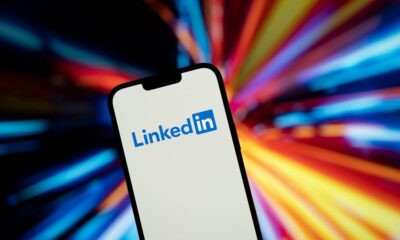“We want to be treated as individuals by the brands we do business with,” said Katie Wheeler, senior manager of product marketing at Salesforce, in a recent webinar. “But, it’s hard for companies to treat folks at the individual level because there’s so much data — there are so many platforms and devices.”
“But this is what customers expect — they expect a personalized experience,” she added.
The demand for greater customization is something brands can’t avoid. Seventy-one percent of consumers expect companies to deliver personalized interactions, according to McKinsey’s Next in Personalization 2021 Report. Marketers need to know what level of personalization their organizations are currently providing and what steps need to be taken to improve it.
Assess your personalization readiness
One of the foundational features of personalization is one-to-one interaction, rather than sending the same messaging and providing the same experiences to all customers. However, this can often be challenging for brands.
“A lot of companies invest in all this great technology where customer data is stored,” Wheeler said. “But it’s often siloed in different systems.”
Siloed customer data can open the door to disconnected brand experiences, preventing marketers from understanding their audiences. To enact real-time personalization at scale, brands need to know how their data is stored and how it’s used to create personalized experiences.

Wheeler recommends marketers implement technology like decision engines to scale up their personalization efforts. These technologies can use AI to track customer behavior, process the data, and then offer personalized solutions in the form of recommended actions, offers, products, etc.
Implement a phased approach
Once marketers know their brand’s level of personalization readiness, they can more easily enact the necessary changes. No matter what amount of personalization you’re dealing with, all marketers can benefit from making changes incrementally.

“An important reason for starting small is that you may be facing some pushback from stakeholders,” said Matt Wash, senior manager of marketing technology and operations at Horizontal Digital, in the same webinar. “What success can look like in this phase is identifying a single channel of personalization and partnering with the [company] division that is more ready for personalization, finding successes, and proving [that success] to the rest of the organization as you progress.”
Focus on audience segments and business objectives
When enacting a marketing personalization project, marketers should first analyze primary audience data and set up benchmarks for success. Establishing these foundational data points will make it easier to scale efforts in the future, especially when detailed use cases are employed.
“Identify and prioritize use cases to execute,” said Erica Skelly, senior personalization strategist at Horizontal Digital, in the same presentation. “Look at what’s going to drive the biggest business impact with the lowest hanging fruit.”
Getting executives on board with personalization tactics is much easier with use cases that highlight successes. The more data you have, the more specific these can be, which can make it easier to tie them to business goals.
Get the daily newsletter digital marketers rely on.
Expand and connect additional channels
“Learn from the use cases,” said Skelly. “Look at any lift in key metrics … You can also refine or change the use case, making sure you’re enhancing the performance.”
She added, “If possible, connect a new channel to make it a multichannel approach.”
Streaming multiple data feeds from tools like CDPs can help highlight trends from these use cases. Adding these to your martech stack can show marketers which channels are performing best, which channels audience segments prefer, and more.
Skelly also suggests identifying apps, email, or any other connections marketers can use to keep customers within the sales funnel. Then, marketers can test how effective they are at engaging people at key touchpoints.
Leverage insights to create a personalized omnichannel experience
“Utilize the connectivity across the additional channels you’ve identified to bring customers back into the funnel,” Skelly said. “Drive them toward the conversion point to ensure they’re increasing the ROI based on your business objectives.”
This advanced phase of personalization is all about acceleration — scaling up your multichannel expansion, data and trend analysis, and tool integrations. Marketers can then enact more in-depth data measurement tactics such as propensity modeling and last/multitouch attribution.

An important thing to keep an eye on during this acceleration phase is your brand’s content. Marketing to audiences on different channels calls for varied types of content, optimized to fit the customer’s context. Marketers should use the insights gained from earlier phases to better structure their personalized messaging in a way that brings people into the funnel.
Wash noted that marketers must also be aware of the “privacy paradox,” which can help keep content/experiences personalized without breaching customers’ privacy: “Everybody wants more personalized experiences,” he said. “But, we also value our privacy and are concerned about the information we’re sharing.”
He added, “That’s something that needs to be constantly assessed when looking for opportunities for personalization.”
Watch this webinar presentation at Digital Marketing Depot.









![How to Create A Website to Sell Products In 8 Steps [+6 Expert Tips] How to Create A Website to Sell Products In 8 Steps [+6 Expert Tips]](https://articles.entireweb.com/wp-content/uploads/2024/10/1727868370_How-to-Create-A-Website-to-Sell-Products-In-8.webp-400x240.webp)
![How to Create A Website to Sell Products In 8 Steps [+6 Expert Tips] How to Create A Website to Sell Products In 8 Steps [+6 Expert Tips]](https://articles.entireweb.com/wp-content/uploads/2024/10/1727868370_How-to-Create-A-Website-to-Sell-Products-In-8.webp-80x80.webp)




You must be logged in to post a comment Login